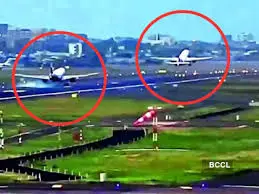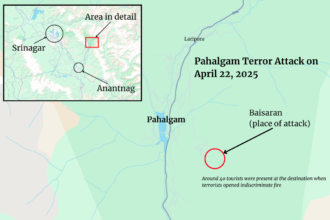IndiGo Air India loss of separation in Mumbai incident has triggered serious safety concerns after two aircraft came dangerously close to each other at Mumbai airport. The near-miss involved one IndiGo and one Air India flight, both operating under heavy traffic conditions. Authorities have launched an investigation into the cause of this alarming breach in aviation safety protocols.

Authorities in India are looking into a loss of separation incident that happened in Mumbai on June 8. Runway 27 in Mumbai was authorized for the departure of Air India flight 657 and the simultaneous landing of IndiGo flight 5053. The flights were 1,671 feet apart at their closest point, based on ADS-B data from both aircraft.
What the ADS-B data tells us
Flightradar24 received ADS-B data from both aircraft involved in the IndiGo Air India loss of separation in Mumbai. The analysis and imagery below are based on high-resolution data that was downloaded and processed after the incident was reported. For comparison, the annotated data reflects position reports received with identical receiver time stamps, providing a clearer picture of the aircrafts’ proximity during the critical moments.
At around 5,700 feet from the IndiGo A320neo, Air India flight 657 started its takeoff roll at 00:45:05 UTC. As Air India raced to 90 knots ground speed, IndiGo entered the runway area at 00:45:27.
We correlated ADS-B data with video footage of the IndiGo Air India loss of separation in Mumbai to determine the precise touchdown and rotation points. The closest recorded distance between the two aircraft occurred at 00:45:36, when they were laterally separated by just 1,671 feet. At that moment, the Air India aircraft was still on the ground, while the IndiGo aircraft remained airborne.
At 00:45:39, during the IndiGo Air India loss of separation in Mumbai, the Air India aircraft began its rotation while the two planes were just 1,679 feet apart. Merely three seconds later, the IndiGo aircraft touched down, highlighting the dangerously close sequence of events.
Downloadable Data
For transparency and further analysis of the IndiGo Air India loss of separation in Mumbai, we’ve made the relevant ADS-B data available for download. This dataset includes timestamped position reports, altitude, speed, and separation metrics used in the investigation.
👉 Click here to download the data
AIC657 CSV
AIC657 KML
AIC657 Granular CSV
IGO49K CSV
IGO49K KML
IGO49K Granular CS
Aircraft information

Both flights involved in the IndiGo Air India loss of separation in Mumbai were operated by Airbus A320-251N aircraft. Air India’s aircraft, registered VT-RTS, was delivered new to the airline in March 2024. IndiGo operated VT-ISV, which was delivered in July 2021.
✈️ Conclusion
The IndiGo Air India loss of separation in Mumbai highlights a serious lapse in air traffic management and runway safety protocols at one of India’s busiest airports. Although no injuries or damage occurred, the dangerously close proximity of the two aircraft underscores the critical importance of precise coordination between pilots and air traffic control. As investigations continue, the aviation community awaits concrete actions to prevent similar incidents in the future and to ensure the highest standards of flight safety.
This incident serves as a wake-up call for stricter adherence to standard operating procedures. Enhanced training and improved surveillance systems may be necessary to avoid future occurrences. Aviation authorities are now under pressure to review operational guidelines and reinforce accountability across all levels of airport management.
The IndiGo Air India loss of separation in Mumbai should prompt a nationwide audit of air traffic control protocols, especially at high-density airports. Stakeholders must collaborate to integrate advanced alert systems and real-time monitoring technologies. Continuous simulation-based training for both ATC and flight crews can enhance response times during high-risk scenarios. Regulatory bodies like the DGCA must enforce stricter compliance and introduce penalty mechanisms for protocol breaches. Ultimately, the goal is not just to prevent accidents, but to create a zero-compromise safety culture in Indian aviation.
















